
AB + BC = AC
Segment Addition Postulate
Given: If p then q
p
Conclude: q
The Law of Detachment
If a = b, then a - c = b - c
Subtraction property
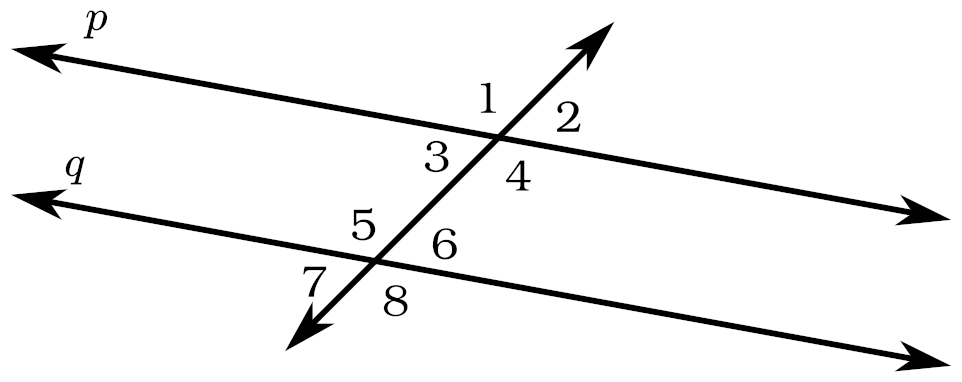
Name a pair of same-side interior angles.
angle 3 and angle 5
angle 4 and angle 6
Give a reason for this step:
3x - 4 = 23
3x = 27
Addition property
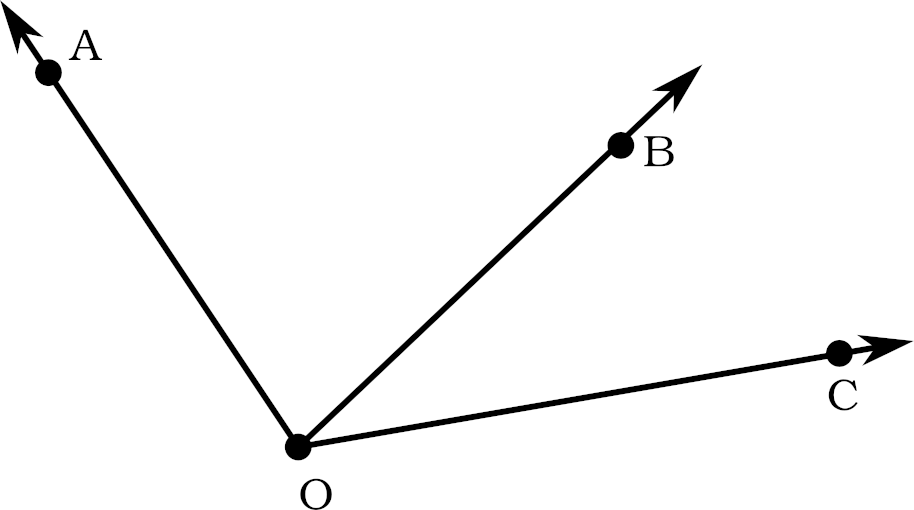
m angle AOB + m angle BOC = m angle AOC
Given: If p then q
If q then r
Conclude: If p then r
Law of Syllogism
a(b + c)=a cdot b+a cdot c
Distributive property
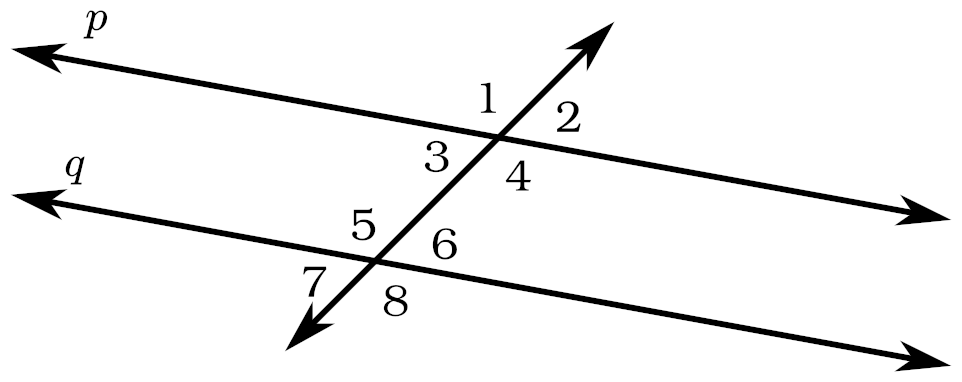
Name a pair of alternate exterior angles.
angle 1 and angle 8
angle 2 and angle 7
 Give a reason for this step:
Give a reason for this step:
AB + BC = AC
x-1 + 3x -7 = x+7
Substitution property
 Solve for x
Solve for x
x=5
Ants have six legs.
Ants are insects.
Division property
If a = b and c ne 0, then a/c = b/c
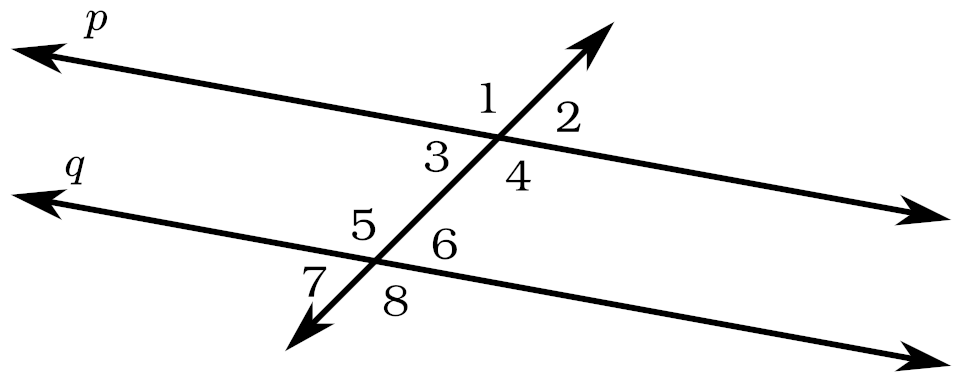
angle 1 and angle 7
Same-side exterior angles
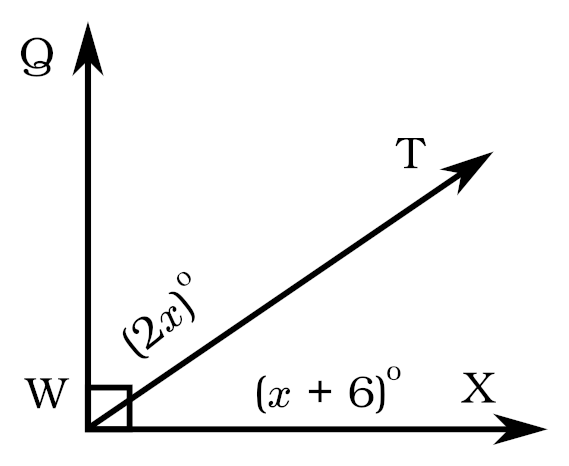
m angle QWT + m angle TWX = 90^circ
Definition of complementary angles

What equation could you write from this diagram?
m angle QWT + m angle TWX = m angle QWX
2x + x +6 = 90
If the sum of the digits of a number is divisible by 9, then the number is divisible by 9.
If a number is divisible by 9, then it's divisible by 3.
If the sum of the digits of a number is divisible by 9, then it's divisible by 3.
Reflexive property
a=a
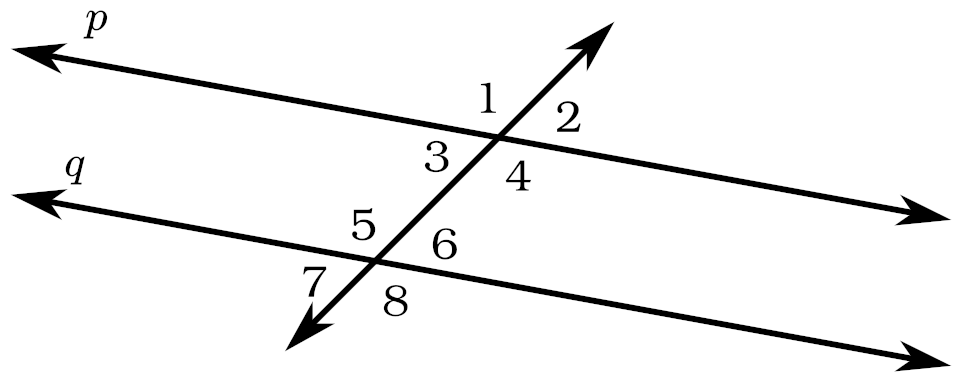
angle 3 and angle 7
Corresponding angles

2x + x + 6 = 90
3x + 6 = 90
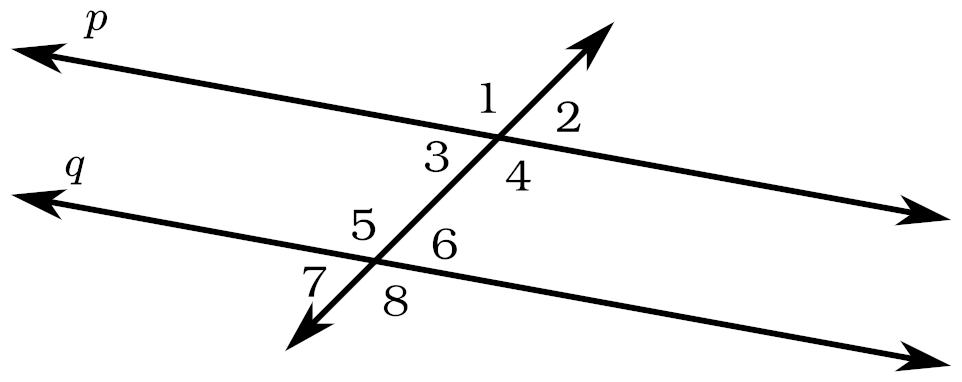
m angle 3 + m angle 4 = 180^circ
If you eat yogurt, then you're eating dairy.
If you eat dairy, then you're getting calcium.
Rosalinda eats yogurt.
Rosalinda is getting calcium.
Transitive property
If a=b and b=c then a=c
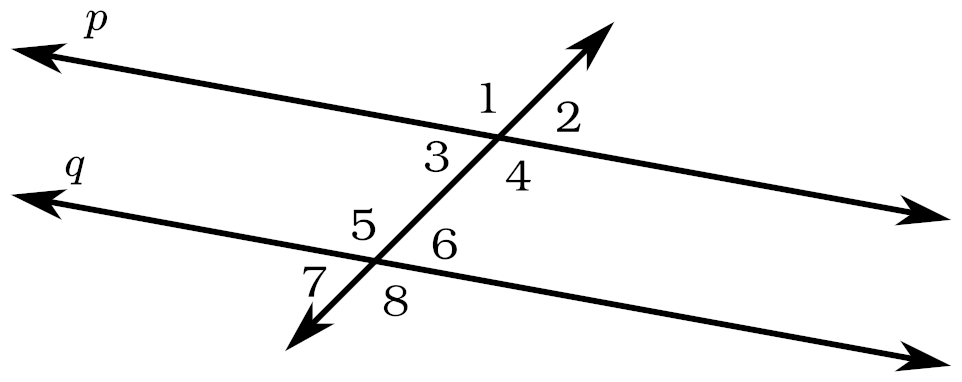
angle 6 and angle 7
Vertical angles

m angle LGK + m angle GKM = 180^circ
Same-side interior angle postulate